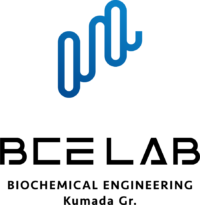Authors
Se Yong An, Minh-Phuong Ngoc Bui, Yun Jung Nam, Kwi Nam Han, Cheng Ai Li, Jaebum Choo, Eun Kyu Lee, Shigeo Katoh, Yoichi Kumada, Gi Hun Seong
First author
Se Yong An
Corresponding author
Gi Hun Seong
Publication Style
Journal name Journal of colloid and interface science
Year
Volume, issue, pages
331(1) 98-103
Abstract
Liposomes were used as templates to prepare size-controlled and monodisperse poly(ethylene glycol) (PEG) hydrogel nanoparticles. The procedure for the preparation of PEG nanoparticles using liposomes consists of encapsulation of photopolymerizable PEG hydrogel solution into the cavity of the liposomes, extrusion through a membrane with a specific pore size, and photopolymerization of the contents inside the liposomes by UV irradiation. The size distributions of the prepared particles were 1.32±0.16µm (12%), 450 ± 62 nm (14%), and 94 ± 12 nm (13%) after extrusion through membrane filters with pore sizes of 1 μm, 400 nm, and 100 nm, respectively. With this approach, it is also possible to modify the surface of the hydrogel nanoparticles with various functional groups in a one-step procedure. To functionalize the surface of a PEG nanoparticle, methoxy poly(ethylene glycol)–aldehyde was added as copolymer to the hydrogel-forming components and aldehyde-functionalized PEG nanoparticles could be obtained easily by UV-induced photopolymerization, following conjugation with poly-l-lysine-FITC through amine–aldehyde coupling. The prepared PEG particles showed strong fluorescence from FITC on the edge of the particles using confocal microscopy. The immobilization of biomaterials such as enzymes in hydrogel particles could be performed with loading β-galactosidases during the hydration step for liposome preparation without additional procedures. The resorufin produced by applying resorufin β-d-galactopyranoside as the substrate showed the fluorescence under the confocal microscopy.
